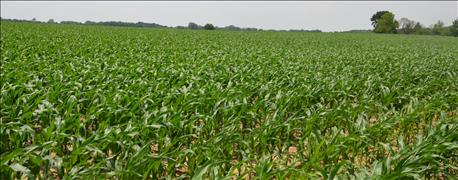
New products coming on the market are rekindling interest in taking soil samples shortly before sidedressing corn and using the results to dial in nitrogen rates. However, Bob Nielsen, Purdue University Extension corn specialist, and Jim Camberato, Extension soil fertility specialist, still say these tests are only useful, at least in the eastern Corn Belt, in specific situations.
“The pre-sidedress N test has limitations here,” Nielsen says. “It is useful if you are on very high organic matter soils, such as mucks, or if manure was applied to the field.
Related: 5 questions you shold ask before using starter fertilizer

HOW MUCH TO APPLY: There are various devices on the market intended to help you decide how much N to sidedress when corn is at this stage, training from handheld meters to maps to on-the-spot soil testing machines. Bob Nielsen says the question is whether any of these can be calibrated to accurately predict how much N should be applied.
“If you are using it on typical mineral soils with average organic matter, there isn’t good correlation between test readings and recommendations, and final yields if you make N applications based on those recommendations.”
What Nielsen is saying is that if N levels in the soil when you test are very high, as with very high organic matter soils, soils where manure was applied or where a legume cover crop was plowed down, the test tends to pick that up accurately and the recommendations usually make sense. On the flip side, if N levels are very low, the test usually indicates that as well. However, when N levels in the soil are somewhere in the middle, which is the vast majority of the time in this part of the world, then values and recommendations for further N application based on those values will be all over the board.
There’s renewed interest in using such a test because Yield Center 360 is introducing a testing machine that determines N levels in the soil sample in a matter of minutes. Spokesmen say that if you carry the scenario all the way out, it would be possible to pull your anhydrous application rig to the field, pull soil samples go to your pickup where the machine is and run the tests, then decide what rate to dial in for N application.
Related: Make the case for keeping nitrogen off the surface during application
The machine also measures pH. It has passed various tests for accuracy designed by organizations that monitor accuracy of testing equipment.
Farmers still need to realize that it’s a pre-sidedress N test, Nielsen observes. They are useful where soils are very high or very low in N, but not very consistent on recommendations in typical situations.
About the Author(s)
You May Also Like




